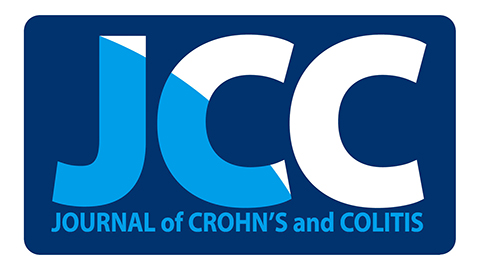“Nonalcoholic fatty liver disease (NAFLD) develops when the liver is unable to oxidize or export excess free fatty acids generated by adipose tissue lipolysis, de novo lipogenesis, or dietary intake. Although treatment has generally been centered on reversing metabolic risk factors that increase the likelihood of NAFLD by influencing lifestyle modifications, therapeutic modalities are being studied at the cellular and molecular level.
The endocannabinoid system has been of recent focus. The agonism and antagonism of cannabinoid receptors play roles in biochemical mechanisms involved in the development or regression of NAFLD. Exocannabinoids and endocannabinoids, the ligands which bind cannabinoid receptors, have been studied in this regard.
Exocannabinoids found in cannabis (marijuana) may have a therapeutic benefit. Our recent study demonstrated an inverse association between marijuana use and NAFLD among adults in the United States.
This commentary combines knowledge on the role of the endocannabinoid system in the setting of NAFLD with the findings in our article to hypothesize different potential mechanisms that may influence the inverse relationship between cannabis and NAFLD.” https://www.ncbi.nlm.nih.gov/pubmed/31308686

 “Omega-3 fatty acid derived endocannabinoids are metabolized by cytochrome P450s to form bioactive endocannabinoid epoxides that are anti-inflammatory.
“Omega-3 fatty acid derived endocannabinoids are metabolized by cytochrome P450s to form bioactive endocannabinoid epoxides that are anti-inflammatory. “Cannabis sativa and its extracts have been used for centuries both medicinally and recreationally. There is accumulating evidence that exogenous cannabis and related cannabinoids improve symptoms associated with inflammatory bowel disease such as pain, loss of appetite, and diarrhoea. In vivo, exocannabinoids have been demonstrated to improve colitis, mainly in chemical models. Exocannabinoids signal through the endocannabinoid system, an increasingly understood network of endogenous lipid ligands and their receptors, together with a number of synthetic and degradative enzymes and the resulting products. Modulating the endocannabinoid system using pharmacological receptor agonists, genetic knockout models, or inhibition of degradative enzymes have largely shown improvements in colitis in vivo. Despite these promising experimental results, this has not translated into meaningful benefits for human IBD in the few clinical trials which have been conducted to date. The largest study to date being limited by poor medication tolerance due to the Δ9-tetrahydrocannabinol component. This review article synthesises the current literature surrounding the modulation of the endocannabinoid system and administration of exocannabinoids in experimental and human IBD. Findings of clinical surveys and studies of cannabis use in IBD are summarised. Discrepancies in the literature are highlighted together with identifying novel areas of interest.”
“Cannabis sativa and its extracts have been used for centuries both medicinally and recreationally. There is accumulating evidence that exogenous cannabis and related cannabinoids improve symptoms associated with inflammatory bowel disease such as pain, loss of appetite, and diarrhoea. In vivo, exocannabinoids have been demonstrated to improve colitis, mainly in chemical models. Exocannabinoids signal through the endocannabinoid system, an increasingly understood network of endogenous lipid ligands and their receptors, together with a number of synthetic and degradative enzymes and the resulting products. Modulating the endocannabinoid system using pharmacological receptor agonists, genetic knockout models, or inhibition of degradative enzymes have largely shown improvements in colitis in vivo. Despite these promising experimental results, this has not translated into meaningful benefits for human IBD in the few clinical trials which have been conducted to date. The largest study to date being limited by poor medication tolerance due to the Δ9-tetrahydrocannabinol component. This review article synthesises the current literature surrounding the modulation of the endocannabinoid system and administration of exocannabinoids in experimental and human IBD. Findings of clinical surveys and studies of cannabis use in IBD are summarised. Discrepancies in the literature are highlighted together with identifying novel areas of interest.”
 “Nonalcoholic fatty liver disease (NAFLD) is comprised of nonalcoholic fatty liver (NAFL) and nonalcoholic steatohepatitis (NASH). It is defined by histologic or radiographic evidence of steatosis in the absence of alternative etiologies, including significant alcohol consumption, steatogenic medication use, or hereditary disorders.
NAFLD is now the most common liver disease, and when NASH is present it can progress to fibrosis and hepatocellular carcinoma. Different mechanisms have been identified as contributors to the physiology of NAFLD; insulin resistance and related metabolic derangements have been the hallmark of physiology associated with NAFLD.
The mainstay of treatment has classically involved lifestyle modifications focused on the reduction of insulin resistance. However, emerging evidence suggests that the endocannabinoid system and its associated
“Nonalcoholic fatty liver disease (NAFLD) is comprised of nonalcoholic fatty liver (NAFL) and nonalcoholic steatohepatitis (NASH). It is defined by histologic or radiographic evidence of steatosis in the absence of alternative etiologies, including significant alcohol consumption, steatogenic medication use, or hereditary disorders.
NAFLD is now the most common liver disease, and when NASH is present it can progress to fibrosis and hepatocellular carcinoma. Different mechanisms have been identified as contributors to the physiology of NAFLD; insulin resistance and related metabolic derangements have been the hallmark of physiology associated with NAFLD.
The mainstay of treatment has classically involved lifestyle modifications focused on the reduction of insulin resistance. However, emerging evidence suggests that the endocannabinoid system and its associated 